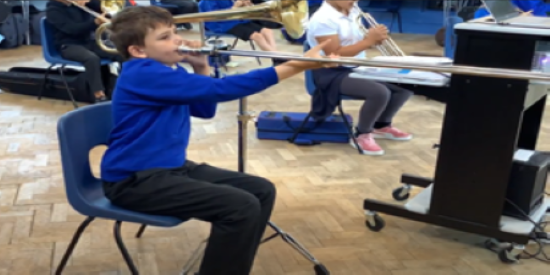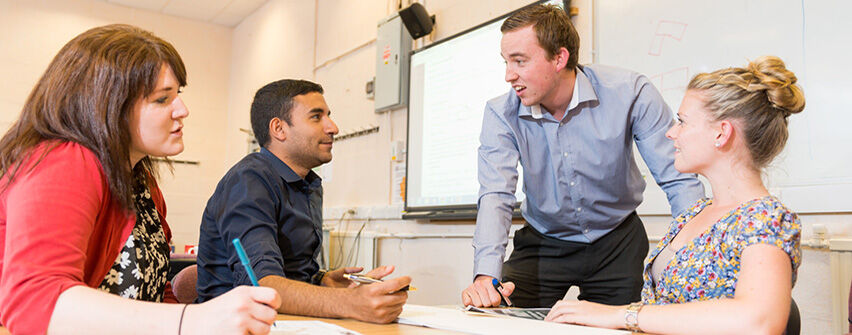As part of the blog series for the CSPACE Annual Conference 2022, this blog takes inspiration from the words of bell hooks in Teaching to Transgress (1994):
‘It takes a fierce commitment ... to let our work as teachers reflect progressive pedagogies’ (ch.10)
Drawing on the lived experiences of four music teachers, we share how the inclusion of adapted instruments through ) and programme supported the development of progressive, and more inclusive, pedagogies in music lessons.
and Emma Nenadic - Research Assistant
IAMM offers parity of access for primary school children with additional needs and was evaluated by the blog authors in March 2022. Through partnerships with and Music Education Hubs, ����������’s needs were identified, assessed, and solutions provided. Solutions to physical needs, whereby adapted instruments were provided by OHMI, resulted in all children being able to access music-making.����
A range of adapted instruments were provided to support the inclusivity of whole class ensemble teaching (WCET) and learning. These included: an artiphon, guitar with strap, violin/cello bow strap, ear defenders, right-hand clarinet and stand, trumpet stand, clarinet stand, computer-based music curriculum, non-wind-based clarinet, and non-wind-based trumpet. In order gain a deeper understanding of the impact of using these adapted instruments on pedagogical practices during WCET, we conducted interviews with WCET teachers. The key themes which emerged relating to progressive pedagogies were: training, developing progressive (and more inclusive) pedagogies, providing opportunities for all children to make musical progress, and praise for the inclusivity of the IAMM project.����
Training��
Before teachers used adapted instruments with children in WCET classes, they were offered training by OHMI. The training they received was highly valued by teachers giving them confidence to teach classes with different adapted instruments as well as identify additional students who might potentially struggle with accessing the instruments.��
WCET Teacher 1: It seemed very important that we learn about every single adapted instrument … I’m teaching strings, so I need to know about the Artiphons.��
WCET Teacher 2: I think [after the training] we would probably be quite good at knowing the children who are going to struggle.��
WCET Teacher 3: [As a result of the training I am] more likely��to be able to deliver classes that will best fit them [the children] … it’s really nice to feel that you are ready. It’s in your arsenal … it’s kind of like basic first aid.��
Developing progressive (and more inclusive) pedagogies��
During the interviews, teachers were offered the opportunity to reflect on how their pedagogical practices has developed with the inclusion of teaching with adapted instruments. As a result of these additions, teachers considered their pedagogical practices to be even more inclusive for young people than had been previously.��
WCET Teacher 1: For me, it’s certainly made me think very hard about how I teach. [For example,] in our teaching [which includes the artiphon] we use coloured stickers to notate what finger to use. [So, when teaching] we say “red dot” or “red sticker” to those using the artiphon, and “D string” to children using the traditional instrument.��
WCET Teacher 2: It was a learning curve, not only for [the child], but for myself as well, because I’ve never used anything like this [one-handed clarinet] before. … So, I kind of had to start again in a way. … The way that they play it [one-handed clarinet] from everyone else is different. I had things like a little finger chart that was specific for this child on the stand in front of them.��
WCET Teacher 3: It stops you putting that default of “I’m not sure that’s going to be possible” into “how are we going to make that possible?”, which is very different to how I might have thought a few years ago.��
Providing opportunities for all children to make musical progress��
Through having access to adapted instruments, WCET teachers emphasised how children using adapted instruments were able access each lesson’s content and to make progress, alongside their peers, in WCET classes.��
WCET Teacher 1: I think that the student [using the artiphon] would not be progressing anywhere near as fast if they were using traditional instruments. … By using adapted instruments, they’re accessing the same class – it’s equitable. … But they’re also getting the same learning, so they’re getting the same change to progress [as their peers].��
WCET Teacher 2: [The one-handed clarinet] was extremely successful in terms of the amount of repertoire that the child was able to access. They were able to continue to work alongside the rest of their group.��
WCET Teacher 4: [Using the trumpet with stand meant that the child] has no physical issues creating the sound. … they were flying. … And the barriers that were previously there didn’t exist anymore. And they were an active member in the group for those ten weeks. … The child accessed it [the WCET��classes] brilliantly and it was a great success.��
Praise for the inclusivity on the IAMM project��
The WCET teachers also reflected positively on how they perceived the children who benefited from using adapted instruments, particularly in terms of students’ willingness to use an adapted instrument, the development of their confidence, and the reactions of other students towards the adapted instruments during the project.��
WCET Teacher 1: The students themselves are very happy to use these adapted instruments.��
WCET Teacher 2: … the sense of this child’s confidence [using a one-handed clarinet] and the way they felt about them self was great. … they became like this little mini celebrity in the class, which was amazing. … The rest of the students were really supportive as well. So, the fact that they were using an adapted instrument, nobody really cared. … If anything, the children felt more like … they were able to use something so different and “wow” look at that and look at how you’re able to use it. … We’re really proud as well.��
WCET Teacher 3: [To the other children] it [the artiphon] was the cool instrument. … It enabled them [the child] to feel completely included as part of what was going on and not different. … I think they loved it and, oh my goodness, the smiles on their faces when they’re playing was just joyous.��
WCET Teacher 4: [Using the trumpet stand] was fine; [the child] just cracked on.��
Re-quoting bell hooks, ����ѱ�’s ‘fierce commitment’ to integrating and normalising the use of adapted instruments in music lessons, and music teachers’ willingness to create these spaces, broke down barriers to music-making. hooks was inspired by Freire’s Pedagogy of Hope (1992) and we end this blog with the following question (shared earlier by WCET Teacher 3) which encapsulates this: “how are we going to make that possible?”��

The IAMM evaluation is part of ̽��ֱ�� Music Education Research Group’s (B-MERG) portfolio of projects. Find out more about B-MERG here.����
Image
Young musician using an adapted trombone stand in whole class ensemble tuition.
Links to other articles/webpages
Link to the full report can be found at: ����

